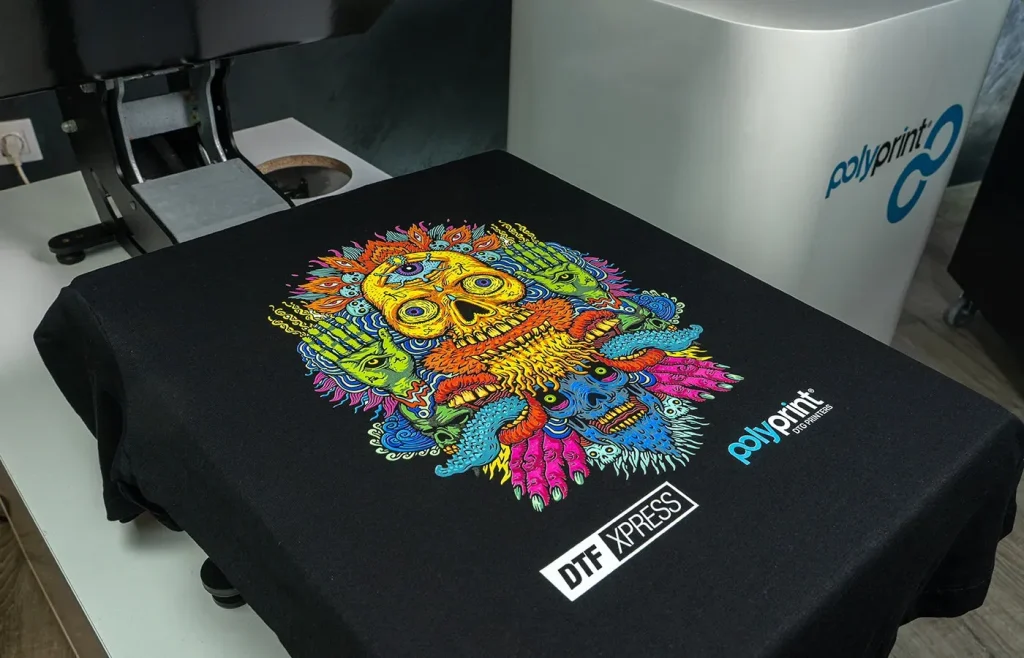In recent years, DTF printing has emerged as a game changer in the realm of custom apparel printing, revolutionizing traditional methods with its innovative approach. Direct to Film printing technology allows for exceptional quality and rapid production, making it an ideal choice for businesses looking to create unique clothing designs. This versatile printing method enables manufacturers to work with a variety of fabrics, catering to the increasing demand for personalized apparel in today’s market. Not only does DTF printing deliver vibrant colors and intricate details, but it also supports sustainable fashion initiatives, appealing to eco-conscious consumers. As the advantages of DTF printing continue to unfold, this technology is set to reshape the future of the apparel industry.
The advent of Direct to Film printing has transformed how designers approach custom garment creation. This advanced method, often referred to as DTF technology, streamlines the printing process by directly transferring designs onto a unique film, which can then be applied to various fabrics. With its capacity for detailed results and adaptability across different materials, DTF printing stands out among other techniques in the custom apparel sector. Brands seeking eco-friendly solutions will find this approach particularly appealing, as it aligns with sustainable fashion trends while offering cost-effective production options. As more businesses adapt to these emerging technologies, the landscape of apparel manufacturing is experiencing unprecedented changes.
The Dynamic Landscape of Custom Apparel Printing
The custom apparel printing industry has undergone a dramatic transformation in recent years, with emerging technologies redefining traditional practices. Among these innovations, Direct to Film (DTF) printing has become a cornerstone for businesses, providing a unique approach that combines quality, efficiency, and versatility. This dynamic landscape sets the stage for the rise of DTF, which caters to both consumer demands for personalization and industry requirements for rapid production.
As e-commerce continues to expand, the need for quick turnaround and individualized designs has never been more crucial. Businesses have shifted their focus to printing techniques that offer high customization without the constraints of high-volume orders. DTF printing addresses these needs, allowing brands to thrive in a competitive market while maintaining the quality that customers expect in custom apparel.
Frequently Asked Questions
What is DTF printing and how does it work?
DTF printing, or Direct to Film printing, is a technique that uses advanced printing technology to transfer designs onto fabric from a specially coated film. High-quality inks are printed onto the film first, and then heat is applied to transfer the image onto various materials, ensuring vibrant colors and durability for custom apparel.
What are the advantages of DTF printing compared to traditional methods?
The advantages of DTF printing include its versatility in handling different fabric types, the production of high-quality prints that withstand washes, and a cost-effective approach for small batch custom apparel printing. Unlike screen printing, DTF requires minimal setup, making it perfect for brands looking to create unique designs without large upfront costs.
How does DTF printing contribute to sustainable fashion?
DTF printing supports sustainable fashion by utilizing water-based inks that contain fewer harmful chemicals compared to traditional printing methods. This environmentally friendly approach aligns with consumer demand for sustainable practices, making DTF technology an attractive option for businesses committed to ethical production.
Can DTF printing be used on all types of fabrics?
Yes, DTF printing is versatile and can be used on a wide range of fabrics including cotton, polyester, blends, and even some synthetic materials. This allows fashion designers and manufacturers to explore creative possibilities for custom apparel that meets various consumer preferences.
What technical skills are required for operating DTF printing technology?
Operating DTF printing technology requires some technical expertise, particularly in managing the printing process and ensuring quality results. Businesses may need to invest in training for staff to effectively handle the equipment and materials, although the overall learning curve is generally less steep compared to some traditional printing methods.
Why is DTF printing becoming popular in the custom apparel industry?
DTF printing is gaining popularity in the custom apparel industry due to its ability to produce high-resolution prints quickly and cost-effectively. As consumer demand for personalized and unique clothing grows, brands are adopting DTF printing technology to efficiently produce small batches while maintaining high quality, making it a mainstream choice.
| Key Points | Details |
|---|---|
| Introduction to DTF Printing | DTF printing is transforming the custom apparel industry with high-quality, cost-effective print solutions. |
| Printing Method | Uses a multi-step process to transfer designs onto fabric using high-quality inks and special film. |
| Versatility | Can print on various materials like cotton, polyester, and blends, allowing creative customization. |
| Market Growth | The DTF market is rapidly growing as brands seek efficient, flexible printing solutions with quick turnaround times. |
| Advantages of DTF | 1. Versatile fabric choices 2. High-quality, durable prints 3. Cost-effective for small batches. |
| Sustainability | DTF printing aligns with eco-friendly practices, using water-based inks and reducing waste. |
| Challenges | Competition from other printing methods, financial investment, and the need for technical expertise. |
Summary
DTF printing is revolutionizing the custom apparel industry by offering a printing method that merges efficiency, versatility, and sustainability. As brands and designers adopt this innovative technology, they can leverage its ability to create high-quality, vibrant prints on various fabrics, meeting the growing demand for personalized apparel. The cost-effectiveness of DTF printing makes it particularly appealing for small businesses, enabling them to explore unique designs without incurring massive upfront costs. Moreover, DTF printing’s alignment with sustainable practices appeals to the environmentally-conscious consumer, proving that it not only enhances creative possibilities but also supports the industry’s shift towards ethical production methods. As this technology continues to evolve, it will undoubtedly shape the future landscape of apparel manufacturing.



